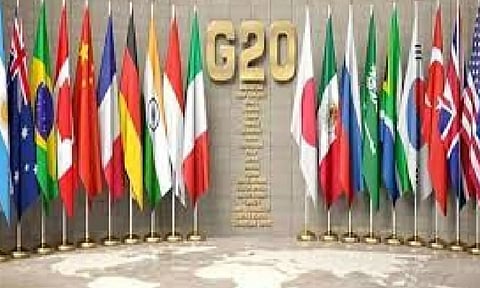

UNITED NATIONS: The country’s Permanent Representative to the United Nations, Ambassador Ruchira Kamboj, who spoke on the sidelines of the 78th session of the UN General Assembly recently, had remarked that the G-20 Summit under India’s presidency, had put the idea of Sustainable Development Goals (SDGs) ‘front and centre’.
The SDGs, also known as the Global Goals, were adopted by the UN in 2015 as a universal call to action to end poverty, protect the planet, and ensure that by 2030, everybody enjoys peace and prosperity. As always, such congregations are occasions for not just taking stock, but also deep reflection on the way forward.
First, let’s get the bad news out of the way. The SDG Progress Report tells us that just about 12% of the SDG targets are on track, while progress on 50% is weak and insufficient.
The world has also stalled or gone into reverse on more than 30% of the SDGs. The report shows that the number of people living in extreme poverty today is higher than it was four years ago. Based on the current trends, only 30% of all countries are set to achieve SDG 1 of ‘no poverty’ by 2030.
A silver lining happens to be India’s performance on SDG 1 — the nation is on track to reduce multidimensional poverty by at least half, much ahead of 2030.
At the recently-concluded G-20 Summit, stakeholders in the Global South had lamented the inability of world leaders, especially from developed economies to put their money where their mouths are, especially in the backdrop of the planetary polycrisis — war, debt, food insecurity, biodiversity loss, pollution, climate change.
Per policy observers, the New Delhi Declaration had brought much-deserved momentum to a broad spectrum of critical issues — including the reforming of multilateral institutions as well as the international financial architecture designed in the aftermath of World War II. The key focus was rearchitecting these concepts to fit our new reality and the new world order.
It was also encouraging to see enterprising leaders putting their muscle behind projects aimed at speeding up the achieving of SDGs under the G-20 2023 Action Plan. These include initiatives for digital transformation; gender equality and empowerment of women; and implementing sustainable, inclusive and just transition globally.
It is worth recalling that the Organization for Economic Co-operation and Development, had said two years back that gender equality and environmental goals are mutually reinforcing. “They go on to create a virtuous cycle that will help accelerate the achievement of SDGs”.
What puts India at an advantageous position is the fact that the country has solutions for both mitigation and adaptation on hand. The COVID-19 pandemic had doled out lessons by the handful, and it underscored the need for systems-wide disaster risk reduction, resilience, as well as adaptation.
Apart from laying bare chinks in our armour, vis-a-vis our risk vulnerabilities, the crisis has also helped us chart out a roadmap for working together in a collaborative and information-driven manner.
A case in point includes digital innovations such as computer modeling of the virus’s outbreak as well as the CoWIN digital inoculation initiative. Accelerating India’s strides in achieving SDGs is certainly doable. But it will need the synergy of political will and citizen participation to truly bear fruit.